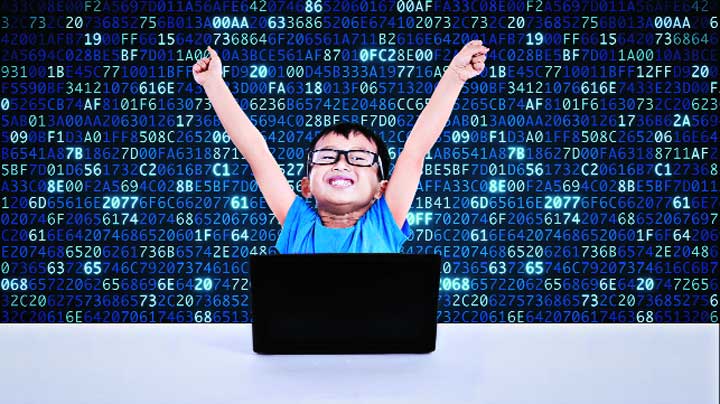We live in a world dominated by technology — our kit-chens have smart refrigerators while the TVs in our living rooms are being replaced by over the top (OTT) platforms such as Netflix and Amazon Prime. Consequently, today’s children are digital natives; their early exposure to technology shapes the way they communicate, socialise and create. Technology is also expected to have far-reaching effects on their future. According to a report by the World Economic Forum, 133 million new jobs will be created in the domain of information technology (IT) by 2025. Recently, social media platform LinkedIn said that skills such as mobile development and user interface design will be in high demand in the near future.
It is important to design an academic curriculum tailored to meet the needs of the future. Academicians are employing different strategies to integrate education with technology and coding can be considered as one of the best ways to achieve this. Coding allows programmers to translate important commands into binary codes with the help of different programming languages such as Java, C++, Python and so on.
Coding can help children become tech-fluent from a very early age. An algorithm may sound complicated but, if taught in a fun way, children can learn to code as well as improve their critical and analytical skills.
Twenty years ago, Steve Jobs said in an interview, “Everyone should learn how to program a computer because it teaches you how to think.” This statement is gradually getting worldwide acceptance. About 40 per cent schools in the US now offer coding classes. In Australia, the government has been investing in STEM (science, technology, engineering, mathematics) initiatives in recent years. Meanwhile, schools in the UK have been teaching the fundamentals of coding to children aged five and above since 2014.
However, coding is introduced in most Indian schools via syntax-oriented languages, which are significantly complex and do not generate interest. If coding is imposed on children with a stern approach, it can hinder interest. An informal approach, on the other hand, will help develop interest. Block-based coding is one such approach.
Due to its ease of accessibility and scalability, block-based coding is widely used today to teach computational thinking. It uses self-explanatory programming blocks that enable students to write simple but effective codes without getting bogged down by the complex syntax and constructs of a text-based programming language.
Be it a game, an animation film or a funny music video — block-based programming can help make them. Scratch, Stencyl, Gamefroot and Pocket Code are some well-known examples of block-based programming. Scratch, the most popular open source software, has an user interface specially designed to attract children.
Launched in 2007 by the Massachusetts Institute of Technology, US, Scratch is a free programming language where visual blocks can be moved in a pre-defined order — or new configurations created — to make stories, games and animations. Scratch is self-explanatory in nature. Learners can write codes for animated stories, anime soap operas, virtual construction kits and science projects. The application makes children better problem solvers and builds up strong analytical skills.
Inspired by Scratch, Next Education India Private Limited has built KODA, a self-learning, game-designing platform for children older than nine. It has seven levels and each level has challenging activities pertaining to coding, technology, science and maths. Once they complete all seven levels, learners have the skills to come up with their own games.
The day is not far off when the three “R”s of reading, writing and arithmetic will be joined by a fourth, that is, algorithm. By teaching algorithmic thinking to children early on in their lives, we give them the opportunity to create a better future.
The writer is the CEO and co-founder of Next Education, an edu-tech company











